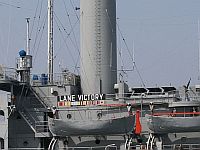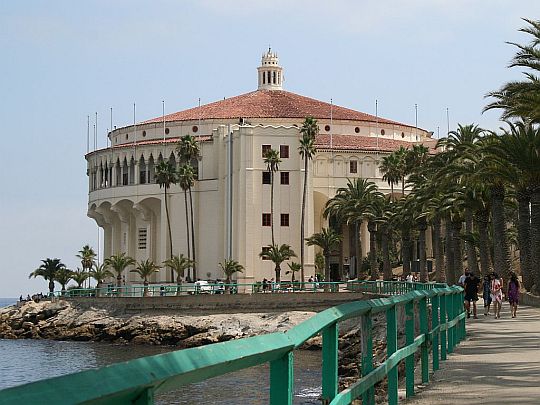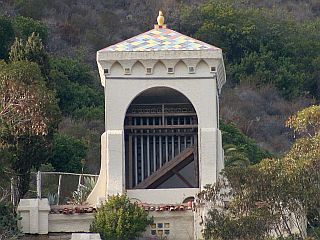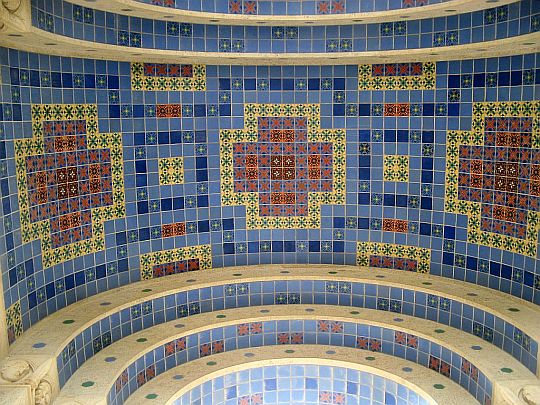 At the conclusion of our romantic excursion to Catalina Island, we passed the Lane Victory berth which is next door to the Catalina Terminal in San Pedro. We took a day cruise on the Lane, which is a National Historic Landmark; the cruise left San Pedro and steamed across the Catalina Channel and back. Unfortunately, I lost the photographic record when I had a disk crash. We’ll make it a point to take the cruise again so we can get more pictures. Damsel snapped this photo of the superstructure as we passed the Lane. Click for big.
At the conclusion of our romantic excursion to Catalina Island, we passed the Lane Victory berth which is next door to the Catalina Terminal in San Pedro. We took a day cruise on the Lane, which is a National Historic Landmark; the cruise left San Pedro and steamed across the Catalina Channel and back. Unfortunately, I lost the photographic record when I had a disk crash. We’ll make it a point to take the cruise again so we can get more pictures. Damsel snapped this photo of the superstructure as we passed the Lane. Click for big.
Wikipedia has this historic account of the Lane Victory:
SS Lane Victory is a Second World War Victory ship which is preserved as a museum ship in the San Pedro area of Los Angeles, California. As a rare surviving Victory ship, it is a U.S. National Historic Landmark.
She was named after Lane College, which was established as a high school for black youths in 1882 by Isaac Lane, a bishop of the Methodist Episcopal Church at Jackson, Tennessee. The school grew into a prominent liberal arts college.
The Lane Victory was built by the California Shipbuilding Corporation in Los Angeles, California and launched on May 31, 1945. On her first voyage, June 27, 1945, Lane Victory carried supplies in the Pacific. She was operated by the American President Lines.
In 1950 the Lane Victory was used to evacuate Korean civilians and U.N. personnel at Wonsan, North Korea during the Korean War. The ship also saw duty during the Vietnam War. In 1970, she was placed in the reserve fleet. Because of her excellent condition, the Maritime Administration decided to set aside the Lane Victory for preservation.










